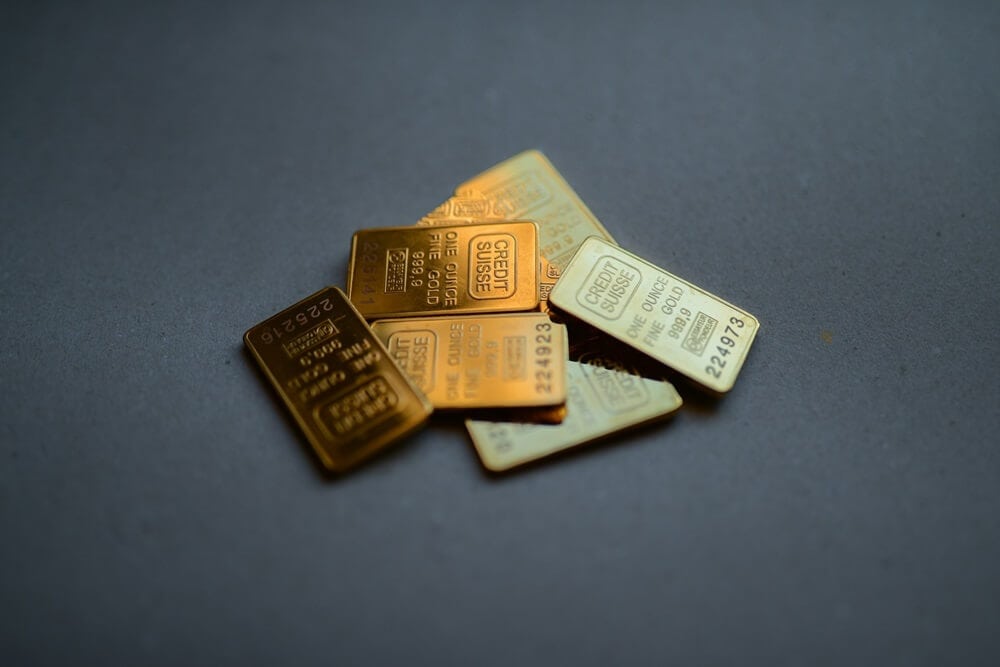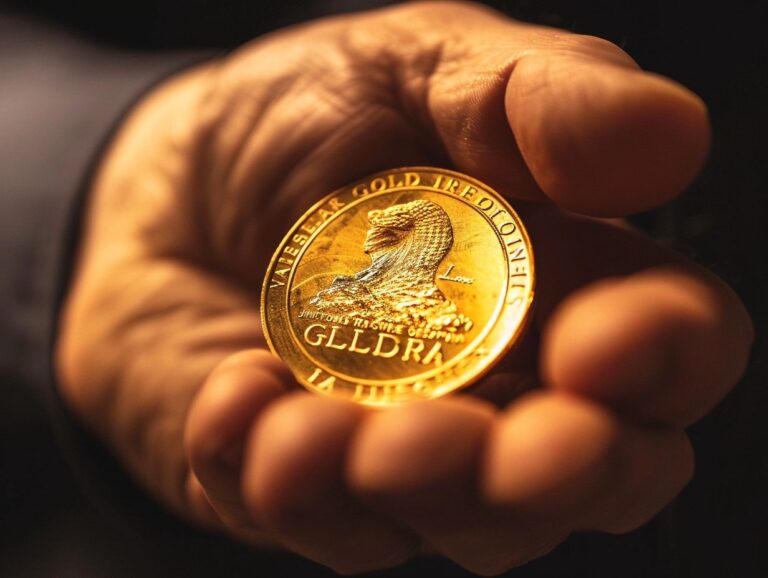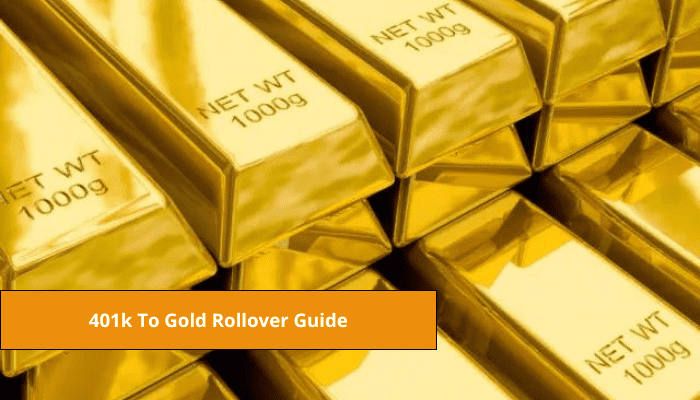- Our content is independently written and reviewed by trusted reviewers & fact-checkers.
- Your information is never sold. We can earn money by connecting you with top Gold IRA Companies. Learn how our reviews work.
- Want to learn more? Meet our authors and explore our editorial policy.

If you seriously think about investing in gold and precious metals, opening a gold IRA might be the best way to do that. Gold IRAs are retirement accounts that allow individuals to purchase and hold gold and precious metals like silver or palladium while enjoying the valuable tax benefits associated with traditional IRAs.
One problem, however, is that only self-directed IRAs can hold physical gold. Not only that, this gold must be IRA-approved and stored in accredited vaults. Because of that, gold and precious metals IRAs tend to come with additional fees compared to traditional and Roth IRAs.
In today’s guide, we’ll go through all the typical gold IRA fees, helping you better calculate the costs and final expected return on your investment.
Table of Contents
Key Highlights
- Gold IRA fees are divided into several key categories, including setup, management, storage, and transaction fees.
- The nature of fees and their amount depends on the size of one’s account and a gold IRA company.
- Besides primary fees, investors can also encounter secondary costs, such as insurance fees, wire transfer fees, account closing fees, etc.
- Companies can charge a flat rate fee or a percentage of the account’s value.
- On average, opening and maintaining a small self-directed IRA account costs between $300 – $600 for the first year.
Overview of Gold IRA Fees
| Type of Fee | Purpose | Cost & Payment Frequency |
| Account setup fee | Opening a self-directed IRA | $50 – $100+ (one-time) |
| IRA management fee | Administrative tasks performed by the custodian, e.g., IRS reporting and maintaining one’s account records | $100 – $400+ (annual) |
| Gold IRA storage fees | Storing one’s gold assets in an IRS-approved depository | $100 – $300 (annual) |
| Transaction fees | Charged when buying, selling, or exchanging gold and precious metals | $10 – $100+ (per transaction) |
| Other | E.g., account closing fees, wire transfer fees, liquidation fees, etc. | Varies |
Detailed Look at Key Gold IRA Fees
If you’re new to IRAs, the table above might seem a bit scary. However, as we’ll explain in a second, all these fees have a very good explanation and, as you’ll quickly understand, they play an important role in your investment’s final success. Let’s go through them fee-by-fee:
Account Setup Fee
To purchase and hold gold and precious metals on your self-directed IRA, you must first open an account with an accredited IRA custodian. This, usually, isn’t free, with most IRA companies charging new customers a one-time account setup fee (or application fee).
The application fee can vary from one company to another. In some instances, it can be as low as $50, although most IRA custodians charge around $100 for opening an account. There are rare cases when you might be forced to pay more, so be sure to compare various companies and see how much they charge.
IRA Administrative Fee
Once your account is up and running, your chosen IRA company will then start charging you an administrative fee, also known as an account management fee. Put simply, it’s a recurring fee, typically charged annually, that covers all administrative tasks the custodian performs, such as keeping your account records and fulfilling IRS reporting requirements.
Regarding the payment structure, some IRA companies charge annual flat administrative fees, while others use a sliding percentage fee structure that depends on your account value. Usually, you should expect to pay $200 or more for administrative fees.
Gold IRA Storage Fee
You can’t store your IRA gold at home if you want to leverage the tax benefits of IRAs. To do that, you will need to store the IRA-approved gold and precious metals at an IRS-accredited depository. This, naturally, comes with additional storage fees that custodians typically charge annually.
As for the amount you will have to pay for storing your gold, this depends on several factors, including:
- Your chosen IRA custodian – a company that takes care of the storage and other IRA-related services;
- The depository itself;
- How much gold you store at a depository;
- Whether you opt for segregated (stored individually) or non-segregated storage (stored together with other investors’ assets), the first option is naturally more expensive.
In most instances, the IRA storage fee shouldn’t exceed $300, although it can be more if you store larger amounts of gold and opt for segregated storage.
Transaction Fees
Although not all IRA companies charge fees when you try to buy, sell, or exchange your gold or precious metals within your account, transaction fees are still common among many custodians. Usually, these fees are charged per transaction and don’t exceed $40. That amount depends on the size of one’s transaction, and it’s not uncommon for companies to charge more.
Other Common Gold IRA Fees
The list of fees typically doesn’t end with transaction fees. While the exact type and number of costs you will have to pay for your gold IRA will vary from one company to another, some other commonly charged gold IRA fees include:
- Shipping and handling fees – these include the cost of transportation and insurance during transit to (or from) the depository and typically apply to the first purchase on the final distribution.
- Wiring fees – if you use a wire transfer to get funds into your self-directed IRA, your custodian will likely charge you a wire transfer fee, which typically isn’t much but still affects the overall cost of your gold IRA.
- Account closing fees – many custodians charge additional fees for customers who decide to close their accounts; it’s not much, but it’s worth keeping that in mind when choosing your gold IRA company.
Calculating Your Gold IRA Fees
How much does it cost to open and run a gold IRA? Let’s run a quick example, shall we?
Suppose you intend to open a self-directed IRA at Custodian X that has the following fee schedule for an account of your size:
- Opening an account: $75
- Storage fee: $125 (non-segregated) and $200 (segregated)
- Account management fee: $300
This means you can expect to pay at least $500 for the first year of opening and running your account. You can also pay a little extra for a segregated account, which would total your fee amount to $575 for the first year. For the second year, you can subtract the account opening fee, meaning that your annual cost of owning a gold IRA would be diminished by $75.
And that’s probably how much, on average, you should expect to pay, considering the current gold IRA landscape. However, don’t be surprised if you find a custodian that charges more than that. Also, keep in mind that the fees you pay are immensely affected by the size of your account, with larger accounts being typically charged higher fees than smaller ones.
How to Minimize Your Gold IRA Costs
While it’s impossible to avoid paying your gold IRA fees, there are several ways to ensure that you get the best possible deal on your self-account and that the overall costs won’t bite too much into your returns. Here are several tips that should help you minimize your gold IRA fees:
- Compare Different IRA Companies: There are many different IRA companies out there, and each charges different fees. Compare the best IRA companies and see how they structure their costs. Then, create a shortlist and pick the company that best fits your requirements.
- Analyze the Fee Schedule: Take a closer look at the fee schedule offered by the company. Analyze how the schedule is structured and if there are any additional requirements or fees that might apply. For instance, a company might not charge a shipping fee but instead increase the storage cost.
- Look at Various Storage Options: IRA custodians tend to cooperate with more than one depository. These might come with various storage fees and options, so be sure to check them out before jumping headlong into the first depository the company presents. The chances are it’s not the best option when costs are considered.
- Think About Your Investment Goals: Why do you want to invest in a gold IRA? Do you want to use gold as an inflation hedge to protect your retirement savings? Or perhaps you’d prefer to leverage gold’s price volatility and exchange your assets faster? If it’s the latter, it might be a good idea to look at transaction fees that apply. If they are overly high, they will significantly impact your potential returns.
- Take Your Time and Do the Math: Don’t rush into your final decision. Do the math to see which fee schedule best fits your circumstances. For instance, flat fees might seem overly high in the short term, but they might actually save you money in the long run (plus, they are more predictable).
Key Takeaways
Gold IRA can be an excellent investment for those willing to leverage the numerous advantages of gold and precious metals. However, opening and running a gold IRA isn’t cheap. On average, you should expect to pay around $300-$600 annually for your gold IRA, but it’s not uncommon for IRA companies to charge more.
With that in mind, the question you might ask yourself is: is gold IRA worth it? Despite all the fees, we wouldn’t hesitate to say yes, especially if you intend to invest in gold or precious metals nonetheless. Gold IRA provides some excellent tax advantages that, in addition to gold’s standard benefits, make it an attractive investment for those who want to diversify their portfolios or protect retirement savings against inflation and economic turmoils.
Of course, it’s not an investment for everyone. If you have doubts about gold IRAs, calculating the costs is still a good idea as it should help decide whether a gold IRA might be worth giving a go. Either way, knowing as much as possible about gold IRA fees is necessary for making the best possible investment decision.
Article Sources
At Gold IRA Blueprint, we dive deep into the world of gold IRAs, using trusted sources to back up our insights. Our sources range from official documents to expert interviews, ensuring our content is both accurate and reliable. We also draw on research from reputable publishers to give you the most comprehensive understanding possible. Check out our editorial policy to see how we maintain our high standards for accuracy and fairness. Also make sure to check out our Financial Review Process to have a better understanding of our process.














